Introducing the Seacliff Beach Poncho
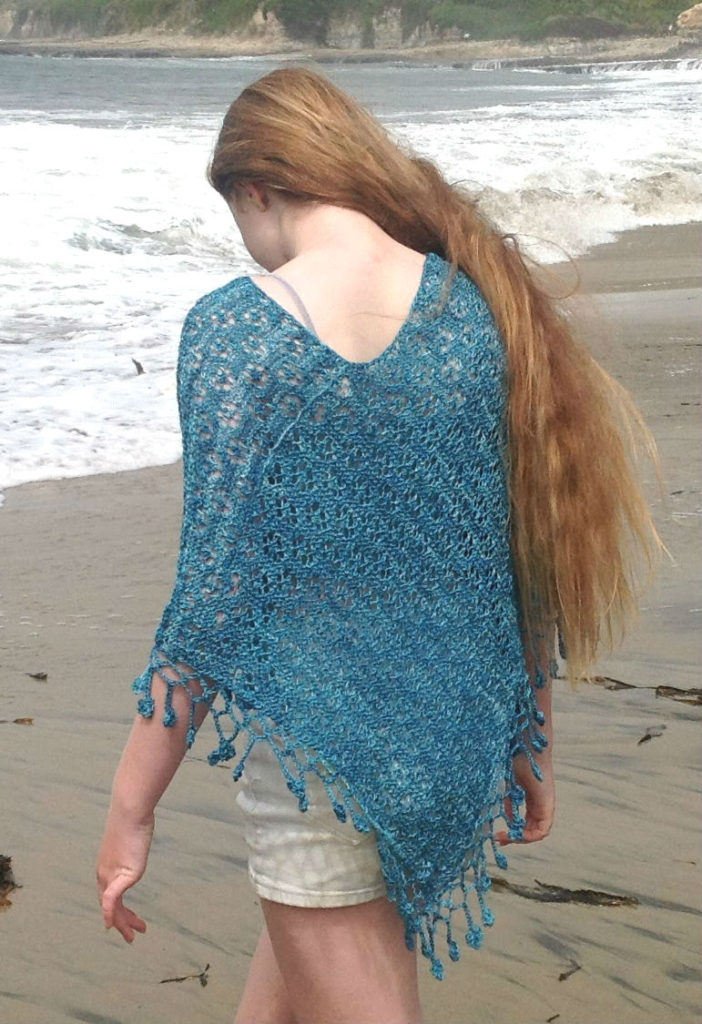
I have a new pattern out that ventures into new territory for me. Although I learned to crochet long before I learned to knit, I haven’t released any patterns until now that included crochet. I love both crafts and often say I am “bi-craftual.” Sometimes I look at a design and think, “That would be so much easier to do in [insert the other craft here].” With this pattern I combined what I consider the best of both crafts. The body of the poncho is knit in a light garter lace pattern that molds to fit the wearer while the trim is crocheted in an open pattern with dangling flower motifs. In addition, a crocheted trim around the neckline provides stability in this area.
I’m also venturing into new territory by hosting my first “a-long,” in this case a knit and crochet along for the pattern. You can find details on my Ravelry page where the K&CAL is being held.
You can find the pattern on both Ravelry and Craftsy at this time and the K&CAL on my Ravelry group. Check out the pattern and come join the fun!
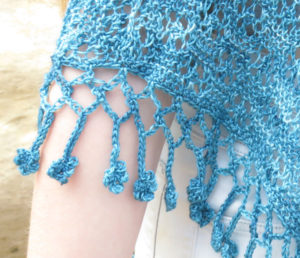
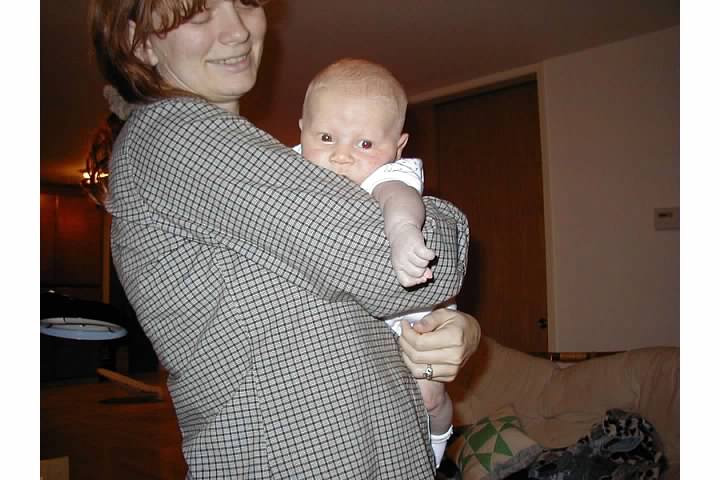
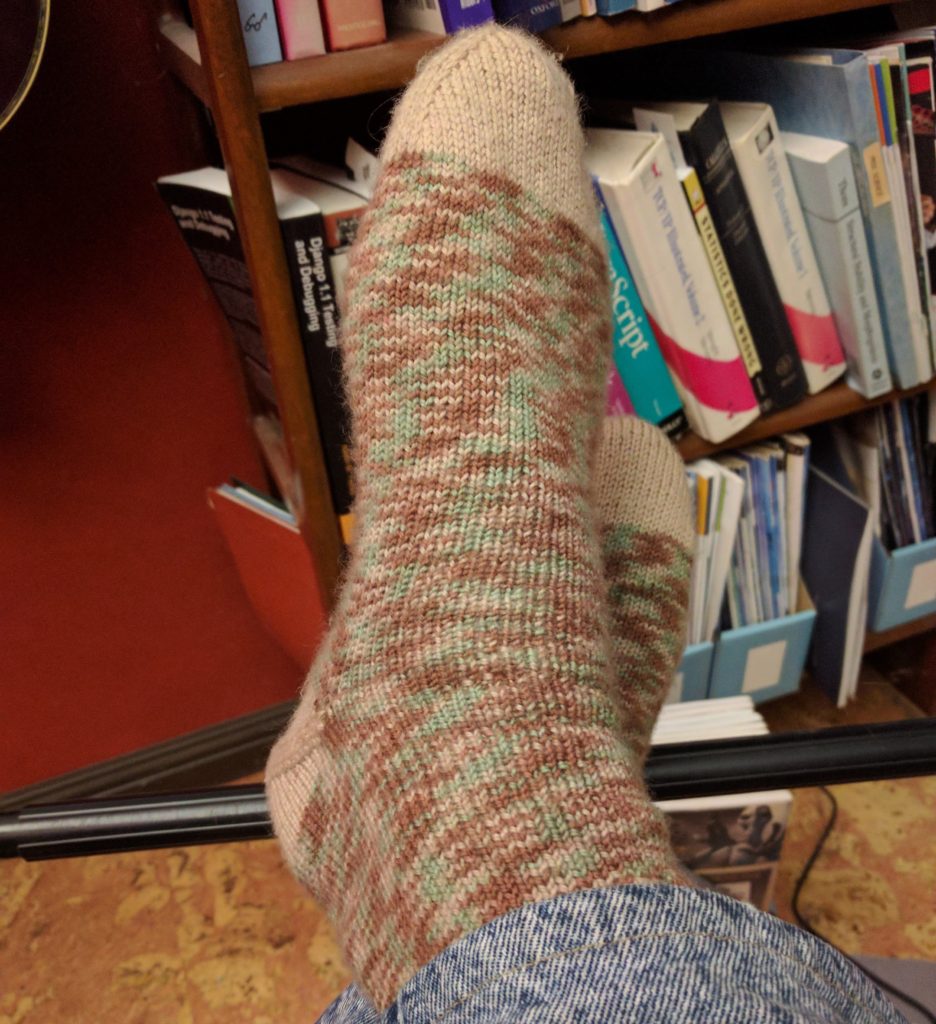
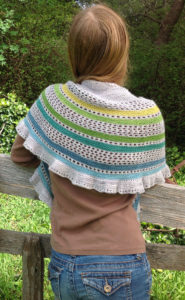
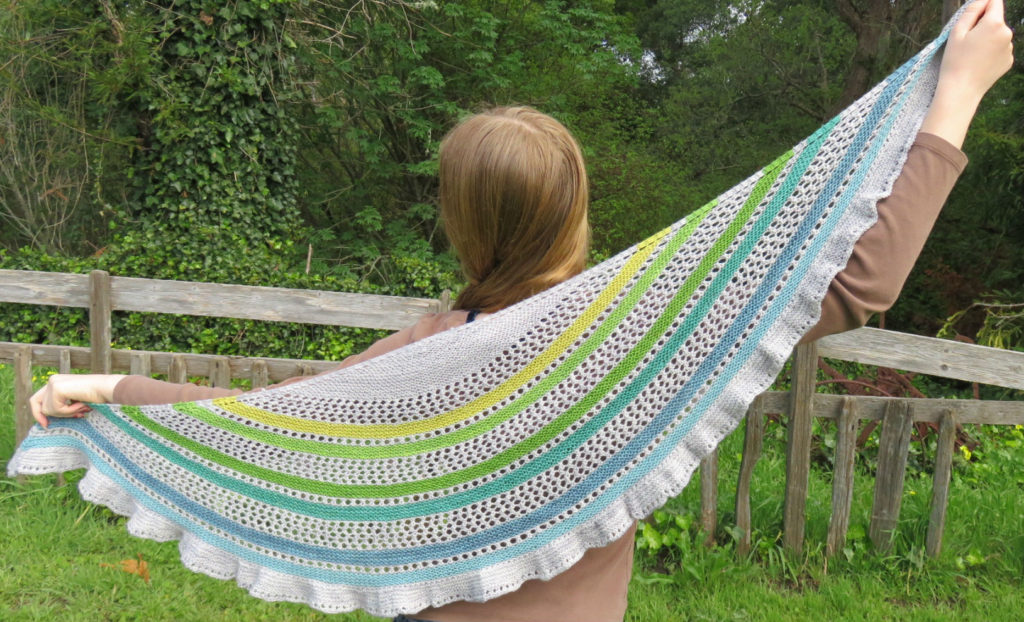
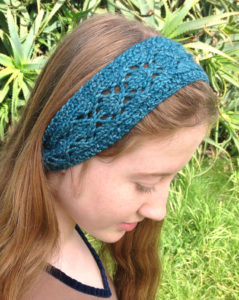
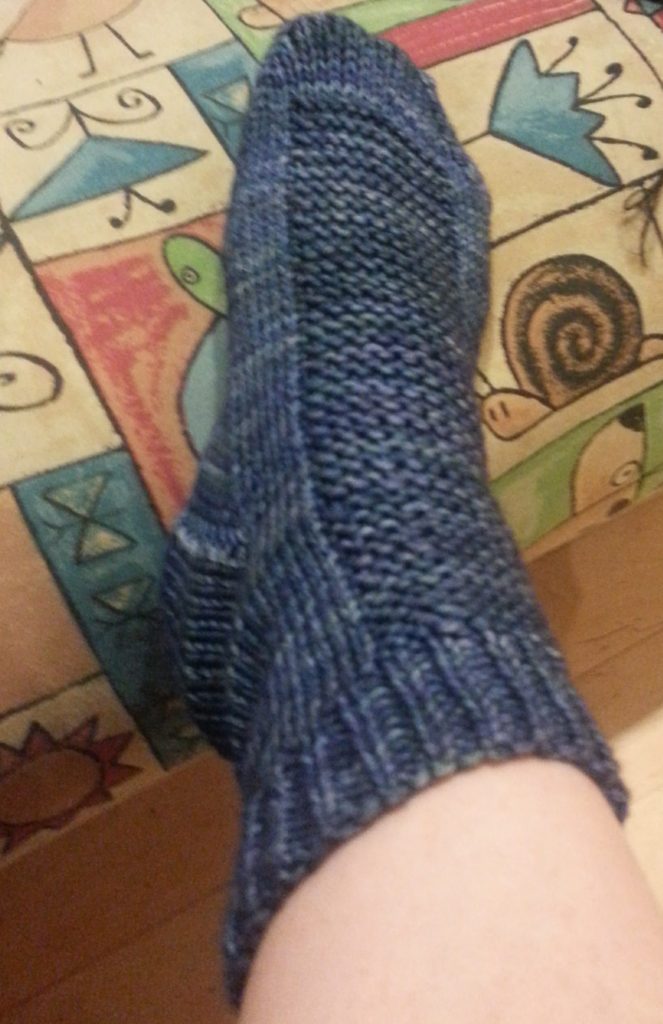 I make both hand cranked socks and hand knit socks and I’ve been thinking a lot about what’s nice about socks. Many (perhaps most) people wear socks on a daily basis, so that makes them one of the most wearable items you can knit. When knitting socks on my antique reproduction sock machine or by hand, I feel connected with the past. Machine made socks are relatively new, hand made socks have been around
I make both hand cranked socks and hand knit socks and I’ve been thinking a lot about what’s nice about socks. Many (perhaps most) people wear socks on a daily basis, so that makes them one of the most wearable items you can knit. When knitting socks on my antique reproduction sock machine or by hand, I feel connected with the past. Machine made socks are relatively new, hand made socks have been around 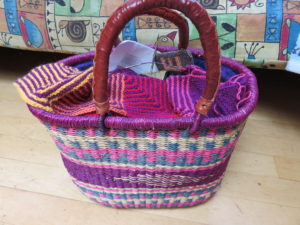 What is comfort knitting? For me, it’s a project that is easy but pleasant in pattern, soothing to work because it’s simple enough that I don’t have to think, and the end result is going to be enjoyable. Right now, that project is the
What is comfort knitting? For me, it’s a project that is easy but pleasant in pattern, soothing to work because it’s simple enough that I don’t have to think, and the end result is going to be enjoyable. Right now, that project is the